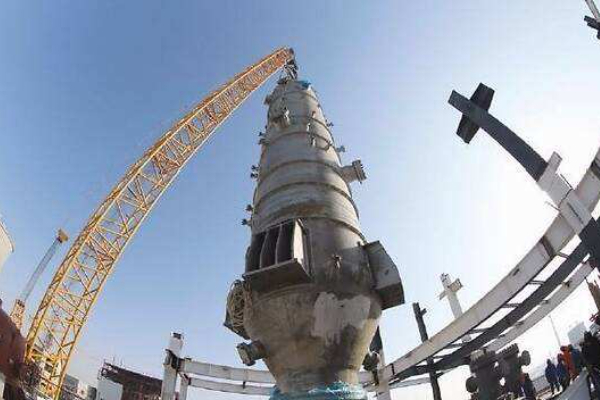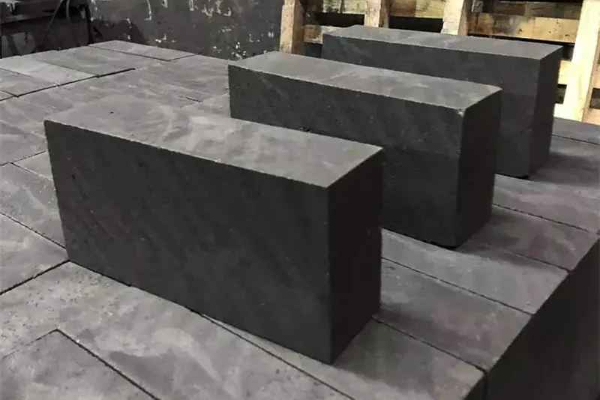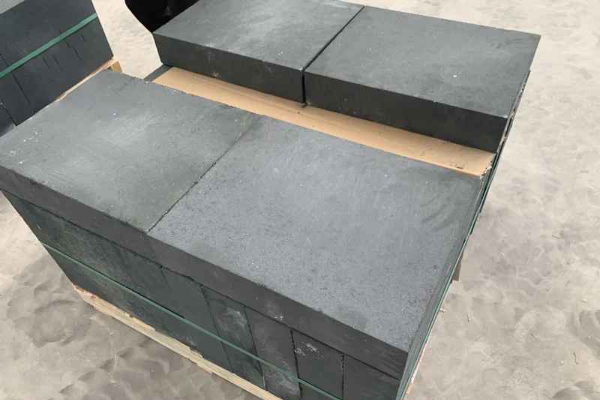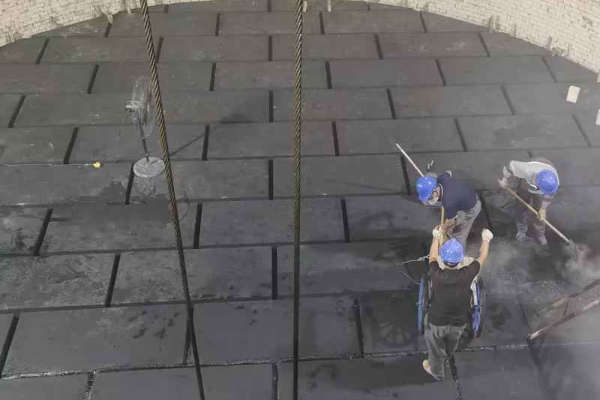What are the causes of corrosion and wear of high chrome bricks in gasifiers?
The gasifier needs to work for a long time under high temperatures and high pressure. The furnace is filled with a strong reducing atmosphere and contains low-viscosity molten coal slag, which is easily entrained by high-speed airflow and continuously washes the lining material. When the furnace is turned on and off, the temperature and pressure in the furnace fluctuate greatly. These problems indicate that the reaction in the gasifier is more complicated, and there are many reasons for the erosion and damage of the lining refractory material.
Introduction to GE water-coal slurry gasifier

GE water-coal slurry gasifier, its shell (including combustion chamber and quenching chamber) main body, and forging materials are all made of SA387Grade11ClasS2, after normalizing + tempering refining, and vacuum degassing treatment, it has good high-temperature strength, oxidation resistance, and sulfide corrosion resistance below 500℃. Among them, the core equipment – the gasifier combustion chamber is divided into three parts: the upper part is the arch, which is built (from the inside to the outside) with high-chrome bricks, chrome corundum castables, and fiber coatings (compressible materials). The design service life of the arch high-chrome bricks is generally 15,000 ore; the middle part is the cylinder, which is built (from the inside to the outside) with high-chrome bricks, chrome corundum bricks, insulating bricks, and fiber coatings (compressible materials). The design service life of the cylinder high-chrome bricks is generally 12,000 ore; the lower part is the cone bottom and slag mouth, which are built (from the inside to the outside) with high-chrome brick and chrome corundum castables. The design service life of the cone bottom high-chrome bricks is generally 6,500 ore, and the design service life of the slag mouth high-chrome brick is generally 4,000 ore.
What refractory materials are used in the gasifier combustion chamber?

The combustion chamber of the gasifier is designed to be lined with four layers of refractory materials – high chrome brick, chrome corundum bricks, insulating bricks, and fiber coating (compressible material), whose functions are as follows: high chrome bricks use Cr90 bricks (Cr2O3), which are high-density high-chrome bricks that can protect the insulating refractory materials from slag erosion, hydrogen erosion and flame damage; the gasifier support lining layer is a high-density low-chrome high-aluminum material (Cr2O3 and Al2O3), namely chrome corundum bricks, which mainly support the vault bricks and can greatly reduce the weight of the gasifier; cel insulating bricks (insulating layer) are hollow alumina ball bricks (low iron content), which can effectively reduce the temperature of the metal shell and improve the shell’s resistance to CO corrosion; the fiber coating (compressible material) is an insulating material made of crushed refractory fibers (some designs also use 25.4mm thick refractory felt), which can be compressed when the cărămizi refractare are heated and expanded, thereby providing thermal insulation protection for the shell.
Analysis of the causes of corrosion and wear of high chrome bricks in gasifier
High-temperature ablation
The operating temperature of the water-coal slurry gasifier is determined by the ash melting point of the coal and the viscosity-temperature characteristics of the coal ash. The main reactions of the water-coal slurry in the gasifier are the cracking reaction and the oxidation reaction. Under normal working conditions, the operating temperature is controlled at about 1350℃. The operating temperature has a great influence on the service life of high chrome brick. The higher the operating temperature of the gasifier, the lower the viscosity of the ash, the better the fluidity, the more serious the ablation and penetration of the high chrome bricks, the greater the erosion rate, and the shorter the service life of the high chrome bricks.

Chemical attack under high pressure
The combustion chamber of the water-coal slurry gasifier undergoes cracking and oxidation reactions at an operating pressure of 6.15MPa, producing crude synthesis gas whose main components are H2 and CO. The refractory materials in the combustion chamber, high-chrome bricks, will be enveloped by these two strong reducing gases, and there must be some tiny gaps and pores in any refractory material body, which will become the channel for the gas in the gasifier to enter the furnace bricks. The gas penetrates into the refractory material and reacts with oxides such as SiO2 and Fe2O3 in the high-chrome bricks, destroying the structure and strength of the furnace bricks and affecting their service life. Prin urmare, the masonry quality requirements for the refractory bricks of the water-coal slurry gasifier are very stringent. If the masonry quality of the refractory bricks is unqualified, it is likely that the refractory bricks will be damaged in a short time, greatly affecting the service life of the refractory bricks and endangering the safe and stable operation of the gasifier.
Ash and airflow flushing
During operation, high-temperature gas and molten ash are continuously produced in the water-coal slurry gasifier. These two media fill the gasifier and flow downward at a certain velocity, causing severe scouring and wear on the wall of the refractory material – high-chrome bricks, acesta este, erosion damage.
Frequent start and stop of gasifier
Frequent starting and stopping have a serious impact on the service life of the gasifier refractory material – high chrome bricks. According to statistics, the erosion rate of the gasifier refractory material will increase by 1 time for every 1-time increase in the number of starts and feeding.
High load of gasifier
When the gasifier is running at a high load, the coal slurry flow and oxygen flow entering the gasifier are large, and the amount of slag is also necessarily large, which is bound to accelerate the erosion and ablation of high chrome brick, and has a great impact on the service life of high chrome brick.

 Fabrica de refractare Rongsheng
Fabrica de refractare Rongsheng
WeChat
Scanați codul QR cu wechat